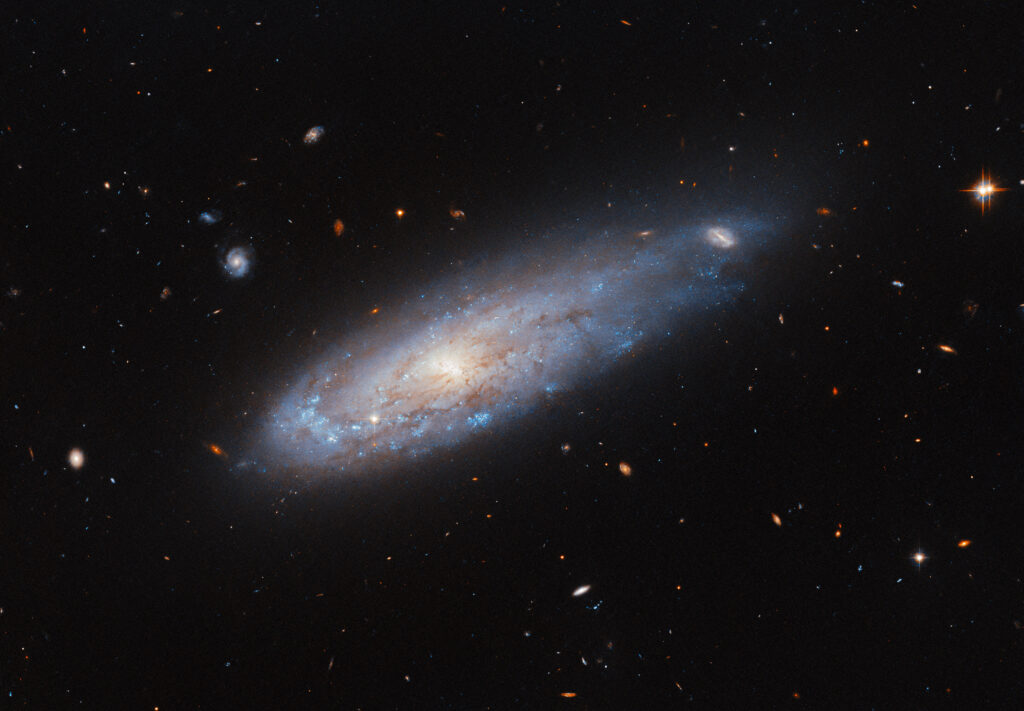Astronomers working with the Hubble telescope have published a new image. It shows the galaxy IC 3225, located at a distance of 100 million light years from Earth.

Similar to our Milky Way, IC 3225 is a spiral galaxy. However, its appearance is quite different from the spirals we are familiar with. IC 3225 looks like it was launched from a cannon, and now it’s rushing through space like a comet, with a tail of gas shooting out of its disk.
The point is that IC 3225 is part of the Virgo cluster, the closest large group of galaxies to the Milky Way. It has more than 1,300 members. Some of them were also caught in the Hubble image. The high density of galaxies in the Virgo cluster has created a dense region of hot gas between them, the so-called intracluster medium, and the cluster’s huge mass causes galaxies to orbit around its center in very fast orbits. When passing through the intracluster medium, especially near the center of the cluster, there is tremendous pressure on the moving galaxies. It can be compared to a strong headwind.
Now IC 3225 is not very close to the core of the cluster, but astronomers have concluded that in the past it passed through it and was subjected to the pressure of the intracluster medium. Because of this, the galaxy has obtained a comet-like appearance: it is compressed on one side, and there are noticeably more regions of active star formation on this leading edge, while its opposite end is elongated. If IC 3225 passed close to another galaxy during its journey, this interaction could also have affected its shape.
According to scientists, IC 3225’s appearance serves as a visual reminder of the incredible forces acting on an astronomical scale. They can shift and reshape even entire galaxies.
Earlier, Hubble photographed another galaxy from the Virgo cluster approaching the Milky Way and fading away.
According to Esahubble


